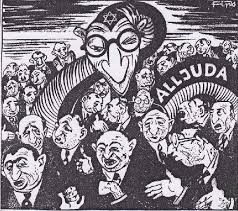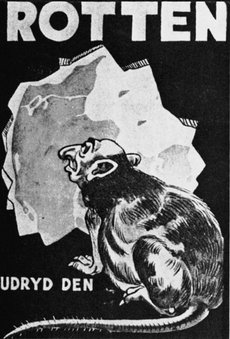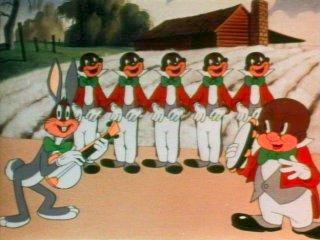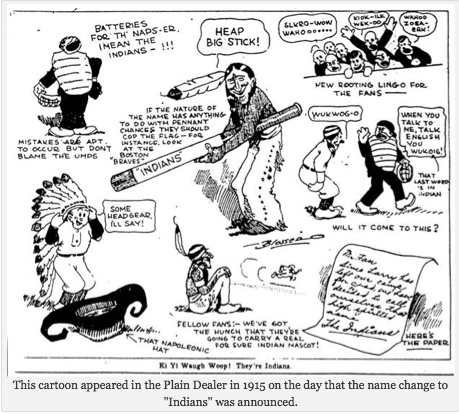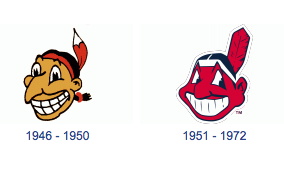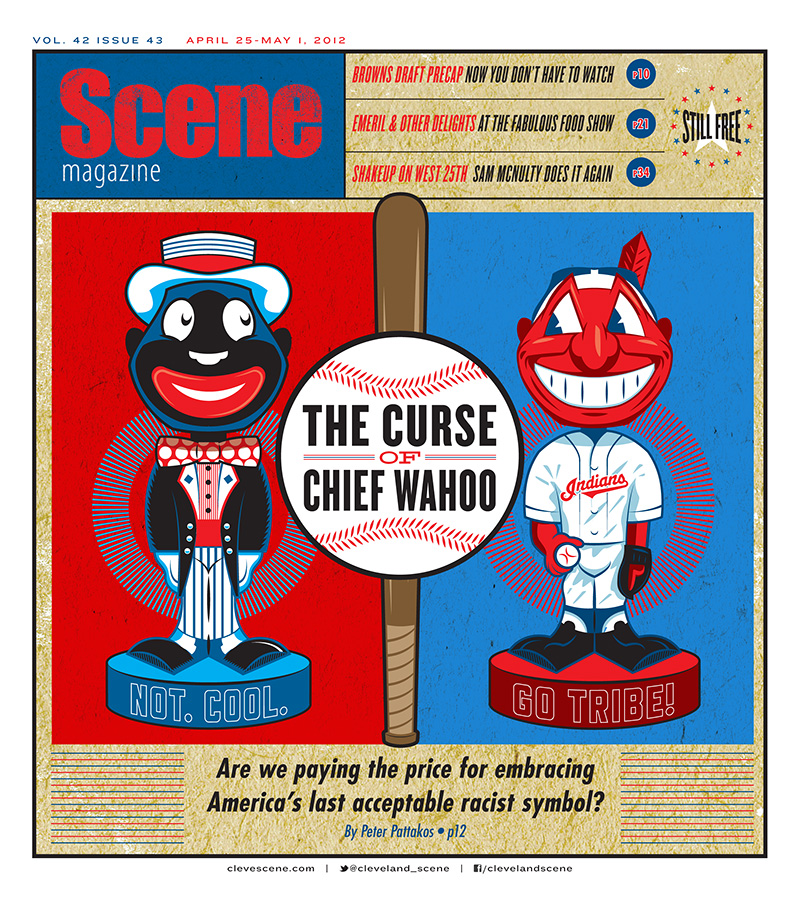Back in the 1920’s, the Nazis figured out that if you showed folks enough pictures of a race of people looking like something less than human, it would be easier to get away with treating that race as something less than human.
White people in the United States had picked up on the same idea since before the abolition of slavery, and from the late 1920s into the 1950s, Jim Crow imagery was commonly employed by all major American animation houses, including Disney, MGM, and Warner Brothers, to ridicule “the appearance, behavior, and intelligence of African Americans,” so as to “buttress Jim Crow laws and Jim Crow etiquette, … dehumanize Blacks, and legitimize[] patterns of prejudice, discrimination, and segregation.”

This time period was the height of the Jim Crow Era in the U.S., and also the time period in which Cleveland’s Major League Baseball team — named “Indians” by local sportswriters in 1915, in the wake of the Indian wars and in a hail of mocking war cries and scalping jokes — adopted the Chief Wahoo logo, a grinning, hook-nosed, now fire engine red caricature of a Native American that took its current form in 1951.
Now it’s 2013, and if the “Indians” name isn’t bad enough, Cleveland baseball fans are still forced to choke down their Major League Baseball along with this Jim Crow/Third Reich relic that incredibly remains an official symbol of the franchise despite constant protest by Native Americans and other opponents of institutionalized racism and genocide mocking. The last time he commented publicly on the issue, Indians owner Larry Dolan affirmed that Chief Wahoo is not being “phased out,” and explained that there’s no problem with the logo because certain Natives tell him so when he asks them about it while they’re entertaining him at “Indian casinos.”
But even if you can get past the Hitler’s favorite baseball team thing, there’s also that being a Cleveland baseball fan in today’s MLB is like playing in a perennial poker tournament where you’re forced to compete with at most half the chips of your top competitors. This year, even after a surprise off-season spending spree, the Indians $82 million payroll is the tenth-lowest in the league, roughly one third of what the Dodgers and Yankees will pay to field a lineup of world class baseball players, and roughly half of what ten more teams, including both of last year’s World Series teams and 6 of 8 of last year’s Divisional Round participants, will pay to do the same.
These economic conditions explain not only last year’s MLB playoff results, but also, among other things, the following:
- Why the last 21 World Series since the Cincinnati Reds title in 1990 have been won by a team from a media market (with a TV contract/revenue base) bigger than Cleveland’s;
- Why, since the late-nineties, Cleveland has lost every single home grown baseball star it’s ever had, including Albert Belle, Jim Thome, Manny Ramirez, C.C. Sabathia, Cliff Lee, and Victor Martinez, with little to no hope of keeping any of them;
- Why Cleveland doesn’t check in until #73 on ESPN’s latest list of the top 100 Major League Baseball players; and
- Why, in the rare event that Cleveland does end up spending big money on a free agent, it’s for one who nobody else wanted;
At this point it’s become crystal clear that the best a Cleveland Indians fan can hope for is that the franchise gets really lucky. Which is why it’s somewhat hard to tell if Indians fans should be insulted by last season’s “What If?” ad campaign, or applaud its honesty.
In any event, the Indians marketing department has upped the ante on brazenness this season by claiming that the cradle of American football, a place that continues to sell out Browns games despite a decade-plus of unimaginable soul-rending incompetence, is actually a “Tribe Town,” even though Progressive Field was more than half empty last year, with attendance the second-worst for a season since the team moved from Municipal Stadium in 1994.
This bold marketing strike looks to be more than anything a function of how low the bar has been set in Cleveland, by Major League Baseball and the Indians themselves, as well as by the Browns and Cavaliers, who haven’t finished above .500 since 2007 and 2010, respectively. Terry Pluto illustrates this phenomenon well (and plays right to the Indians marketing dept.’s hand) by having taken two columns in the last three days to explain that the 2013 Indians should be “worth watching” because they shouldn’t be as godawfully horrible as they were last season, and might be in theoretical contention for a playoff spot for “much of the summer.”
Still, despite all the excitement over new manager Terry Francona, free agent additions Nick Swisher, Michael Bourn and Mark Reynolds, and having gotten anything at all in trade for the most recently departed All Star, Shin Soo Choo, Pluto says that the Indians won’t make the playoffs, the folks at Baseball Prospectus have them penciled in for 81 wins, and Plain Dealer beat writer Paul Hoynes picks them to finish in fourth place in their own division.
So will the 2013 Cleveland Indians break the magic .500 mark, and get a grip on the brass ring of semi-relevance? Was the Dolans’ uncharacteristic off-season spending spree something that could represent sustainable success? Or was it just a desperate shot to keep from falling into the void of complete irrelevance after a season in which public perception of the franchise hit a modern low; a craven and ultimately doomed grab for limited attention and entertainment dollars in an otherwise barren sports landscape?
Admittedly, MLB’s skewed economics make it really hard for me to care, and the organization’s insistence on clinging to Chief Wahoo makes it impossible. So hooray. Go to hell, Tribe. Baseball is great. Major League Baseball is terrible. And the Cleveland Indians, Hitler’s favorite baseball team, are the absolute pits.
—————
UPDATE: Cleveland Indians President Mark Shapiro: “Chief Wahoo isn’t going anywhere.”
—————
